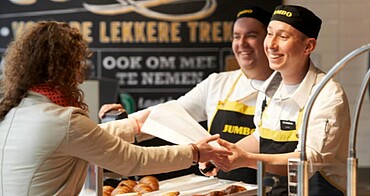Abstract
Jumbo Groep Holding B.V. (Jumbo) is owned by the Dutch family van Eerd. Born in 1921 as a small provincial wholesale business, it has grown into the second largest supermarket chain in the Netherlands with over 21% of the market share. The first wave of its growth took place in the late 1950’s during the reign of Karel van Eerd who built the Jumbo empire with his own hands. With his three children joining the family business in the 1990s, Jumbo embarked on a non-stop acquisition spree. Since 2006, Jumbo took over five supermarkets and one restaurant, innovated with large- and small-size supermarkets, introduced its own Jumbo label, developed ready-to-eat food, and expanded into online business. By 2019, Jumbo had 662 stores, with annual turnover of more than 7.4 billion euros, gave employment to 80,000 people, invested on a Tech Campus and a Food College, and had begun expanding into the Belgian market. How could Jumbo keep growing and innovating at the same time? What strategic changes would they need to adapt to the new digital era? What new capabilities should they acquire to facilitate their vision of growth?
Citation Note
Based on field research; 15 pages Follow the 'handle' link to access the Case Study on RePub. For EUR staff members: the Teaching Note is available on request, you can contact us at rsm.nl/cdc/contact/ For external users: follow the link to purchase the Case Study and the Teaching Note.
Objective
1. Identify the main contributing factors to Jumbo’s strategic growth. 2. Explain Jumbo’s different business models. 3. Describe Jumbo’s main entrepreneurship values. 4. Analyze the complexity of innovation in a large operation. 5. Propose solutions to face strategic growth in the digital era.
